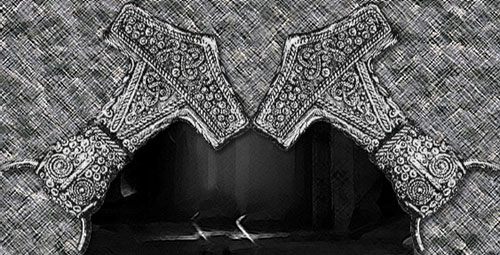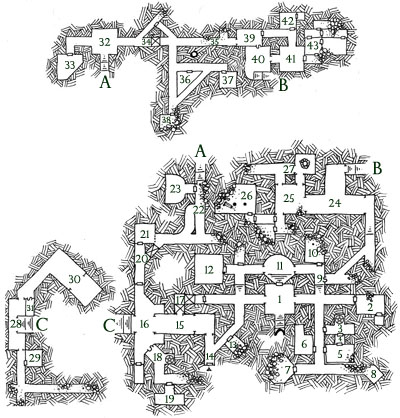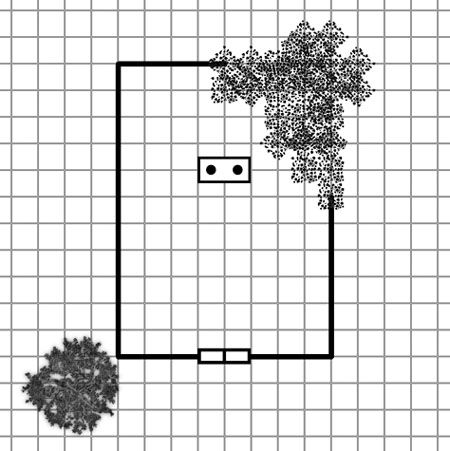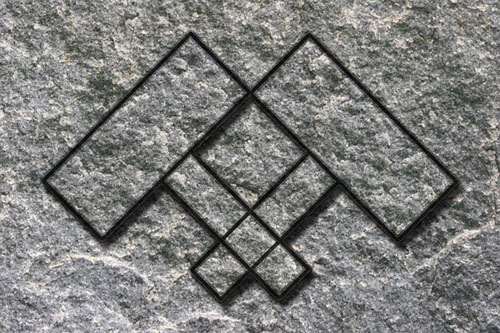AREA 24: The arches at either end of the long hall here are formed from the upper halves of a spinning wheel. A half chipped mural on the ceiling depicts white clouds in a blue sky.
Stairs: Go down, turn right across a short landing, and then descend again into area 40.
AREA 25: The arch to the south has the top of a hammer serving as a capstone (with its handle pointing up). The arches to the north both have a pair of horns curving up from their capstones.
AREA 26: The room opens off to the left. There are still two columns left standing, but you can see a third one further down the length of the hall which has fallen onto its side. Beyond that the room has collapsed. And as the door opens, you see some dust drift down from the ceiling.
Pillars: Disturbing a pillar has a 1 in 6 chance of causing the room to collapse. Removing one of the pillars will automatically cause the chamber to collapse. Everyone in the room will take 8d6 points of damage.
AREA 27: This room contains a stone well raised about three feet high. There’s potable water 30 feet down.
AREA 28: The arch leading to the stair is formed by two large hammers (see area 16). The archway leading towards area 29 has a large, stone eye serving as its capstone. The archway leading towards area 30 has an empty socket at its capstone (a missing eye).
Capstones: Moving the capstone from one arch to the other will cause the (currently secret) door leading to area 31 to become visible and the door to area 29 to vanish.
AREA 29: Hanging from a long iron rod on the far side of the room there is a single red curtain in perfect condition. (The curtain benefits from a mild enchantment to render it immune to the passage of time, but is otherwise unremarkable.)
AREA 30: The archway in this chamber is formed by two spears. There are three iron chests at the end of the chamber. Their lids are thrown back and they have been completely emptied. The chests have been bolted to the floor, although the one on the right is slightly loose.
Secret Compartment: Beneath the iron chest on the right there is a hidden compartment. Loosening the bolts allows the chest to be removed, revealing the compartment. The compartment contains 9 thin strips of gold, each worth 100 gp. There is also a small flask of crystal filled with a reddish liquid (potion of fire resistance).
AREA 31: The door to this room only becomes visible if the capstone in area 28 swaps its position. On a small, circular altar of white marble at the far end of this chamber lie two silver hammers worth 250 gp each due to their high craftsmanship.
Those familiar with dwarfcraft will recognize the hammers as being of dwarf-make. One of the hammers has the dwarven rune for FRIENDSHIP engraved upon it; the other has the Norskan rune for FRIENDSHIP on it.
(Note: These hammers can be used in area 19.)
(Original cartography by Dyson Logos.)















